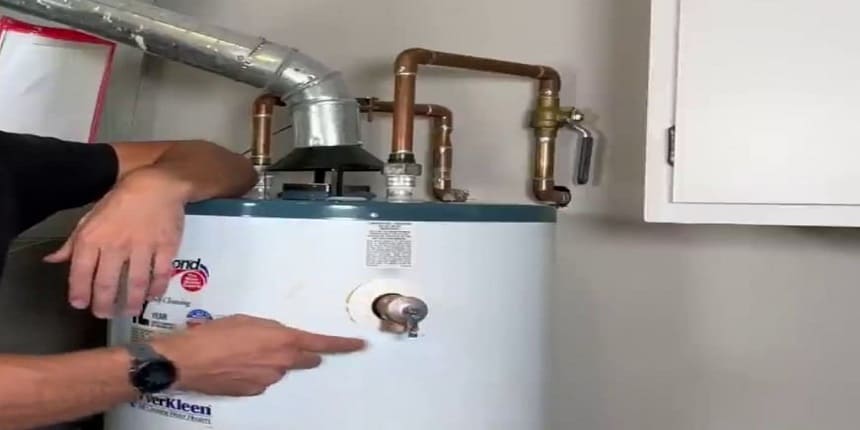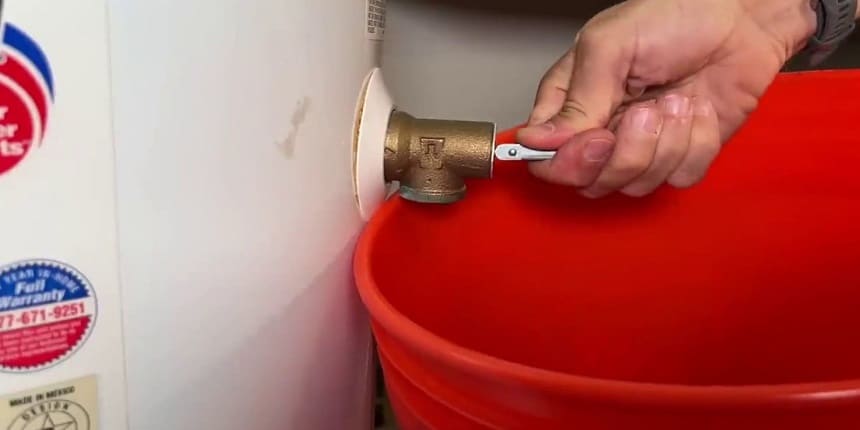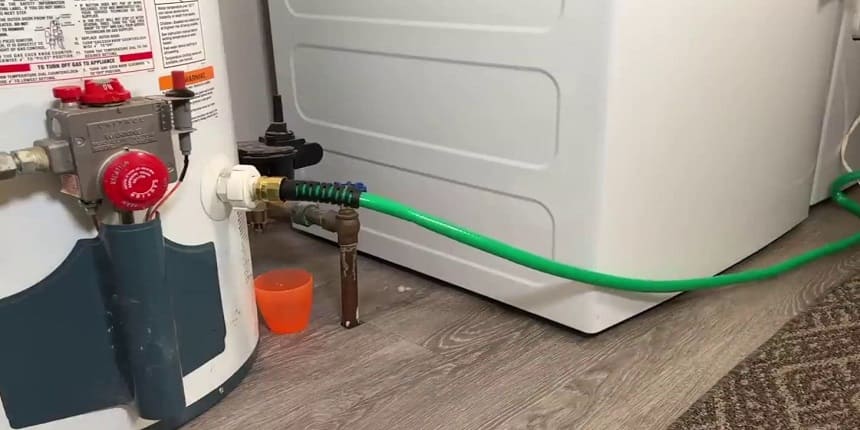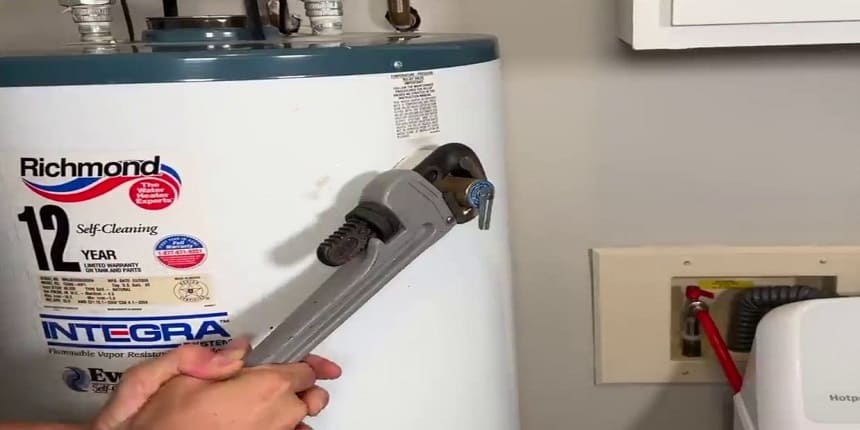Rinnai tankless water heaters are a popular choice for many homeowners due to their energy efficiency and on-demand hot water capabilities.
If the Rinnai tankless water heater’s pressure relief valve is leaking, it may be due to excessive pressure in the system or a faulty valve. This issue can be resolved by inspecting the valve for debris and ensuring it is properly sealed and functioning.
However, a leaking pressure relief valve can be a common issue that must be addressed promptly to prevent further damage and maintain the unit’s efficiency.
We will explore the potential causes of the Rinnai tankless water heater pressure relief valve leaking and guide how to troubleshoot and resolve this issue effectively.

Page Contents
- 1 Rinnai Tankless Water Heater Pressure Relief Valve Leaking
- 2 Why Is My Rinnai Pressure Relief Valve Leaking On My Tankless Water Heater
- 3 Leaks And Signs Of Water Heater Pressure Relief Valve Dripping
- 4 Steps To Troubleshoot – How do I stop Rinnai Tankless Water Heater Pressure Relief Valve Leaking?
- 5 Maintenance Tips For Rinnai Tankless Water Heater Pressure Relief Valve Leaking
- 5.1 #1: Seeking Professional Help When Necessary
- 5.2 #2: Regular Maintenance Practices To Prevent Future New Hot Water Heater Pressure Relief Valve Leaking
- 5.3 #3: Flushing The Heater Periodically
- 5.4 #4: Monitoring Water Pressure Levels
- 5.5 #5: Inspecting And Replacing The Pressure Relief Valve As Needed
- 6 FAQs For Rinnai Pressure Relief Valve Leaking
Rinnai Tankless Water Heater Pressure Relief Valve Leaking
The pressure relief valve is a critical component of a Rinnai tankless water heater, helping to maintain the system’s safety and efficiency. It is designed to alleviate excess pressure within the unit, preventing potential damage or hazards.
Purpose Of The Rinnai Pressure Relief Valve
The purpose of the pressure relief valve is to release water from the heater if the pressure inside exceeds safe levels.
This helps prevent the tankless water heater from reaching dangerously high pressures, ultimately ensuring the safety of the appliance and the surrounding environment.
Why Is My Rinnai Pressure Relief Valve Leaking On My Tankless Water Heater
There are several potential causes of pressure relief valve leaks, including excessive water pressure, mineral deposits and sediment buildup, and a faulty pressure relief valve.
#1: Excessive water pressure

Excessive water pressure can strain the pressure relief valve, causing it to leak.
High water pressure is a common issue in many households and can lead to various plumbing problems, including pressure relief valve leaks in tankless water heaters.
#2: Mineral deposits and sediment buildup
Mineral deposits and sediment buildup within the tankless water heater can lead to blockages in the pressure relief valve, hindering its ability to function properly.
Over time, these deposits can cause leaks and compromise the performance of the water heater.
#3: Faulty pressure relief valve

In some cases, the pressure relief valve itself may be faulty, leading to leaks.
A malfunctioning valve can disrupt the balance of pressure within the water heater, resulting in water leaks and potential safety issues.
The purpose of the pressure relief valve and recognizing the potential causes of leaks, homeowners can effectively identify and address issues with their Rinnai tankless water heater’s pressure relief valve.
Leaks And Signs Of Water Heater Pressure Relief Valve Dripping
When it comes to ensuring the proper function of your Rinnai tankless water heater, identifying leaks and common signs of pressure relief valve issues is crucial.
A leaking pressure relief valve can not only lead to water wastage but also indicate potential safety hazards.
#1:- Physical Inspection Of The Pressure Relief Valve Leaking Outside
Be sure to conduct regular physical inspections of the pressure relief valve on your Rinnai tankless water heater.
A visual examination can reveal any visible signs of leakage or corrosion on the valve.
Check for any dripping or wetness around the valve area and ensure that the surrounding plumbing connections are secure and leak-free.
Additionally, observe the condition of the valve’s drain line to see if there is any discharge or moisture present.
#2:- Monitoring And Recognizing Signs Of Leaks Water Heater Pressure Relief Valve Dripping
In addition to physical inspection, monitoring common signs of leaks is essential for early detection of pressure relief valve issues.
Look out for signs such as dripping or pooling water around the water heater, which could indicate a faulty pressure relief valve.
Pay attention to any unusual noises emanating from the heater, as this could be a sign of excessive pressure buildup.
Furthermore, be aware of fluctuations in water temperature, as a malfunctioning pressure relief valve can impact the heating process.
Steps To Troubleshoot – How do I stop Rinnai Tankless Water Heater Pressure Relief Valve Leaking?
Dealing with a leaking pressure relief valve on your Rinnai tankless water heater can be a frustrating experience.

Understanding the steps to resolve pressure relief valve leaks is crucial to maintaining the efficiency and safety of your water heater. Here are some essential measures to address this issue effectively:
Step #1: Turn Off The Water Heater And Water Supply
To begin troubleshooting a leaking pressure relief valve, it’s essential to turn off the Rinnai tankless water heater as well as the water supply.
This simple step minimizes the risk of scalding or injury while addressing the issue.
Step #2: Flushing The System To Remove Mineral Deposits
Mineral deposits can accumulate in the tankless water heater, leading to pressure relief valve leaks.
Flushing the system is a vital part of regular maintenance and can help to remove these deposits.
It’s recommended to follow the manufacturer’s guidelines for flushing the system to ensure optimal performance and prevent leaks.
Step #3: Adjusting The Water Pressure Settings
Incorrect water pressure can also cause the pressure relief valve to leak.
Adjusting the water pressure settings according to Rinnai’s specifications can help alleviate this issue.
Be sure to refer to the Rinnai tankless water heater manual for specific instructions on adjusting the water pressure settings.
Step #4: Pressure Levels (Recommended) For Rinnai Tankless Water Heaters
Rinnai tankless water heaters are designed to operate within specific pressure ranges.
It’s crucial to ensure that the water pressure remains within these recommended levels to prevent damage to the unit and avoid pressure relief valve leaks.
Check the manufacturer’s guidelines or consult a professional to determine the ideal pressure range for your specific Rinnai model.
Maintenance Tips For Rinnai Tankless Water Heater Pressure Relief Valve Leaking
#1: Seeking Professional Help When Necessary
Owning a Rinnai tankless water heater comes with the necessity of seeking professional assistance when facing issues such as a pressure relief valve leak.
Leaking pressure relief valves can be a sign of various underlying problems, including excessive pressure, faulty installation, or aging components.
It’s essential to contact a qualified technician to diagnose the issue and perform necessary repairs or replacements.
#2: Regular Maintenance Practices To Prevent Future New Hot Water Heater Pressure Relief Valve Leaking
Maintaining your Rinnai tankless water heater is essential to prevent pressure relief valve leaks.
Engaging in regular maintenance practices can help in the prevention of potential issues. This includes flushing the heater periodically, monitoring water pressure levels, and inspecting or replacing the pressure relief valve as needed.
- Flushing the heater periodically
- Monitoring water pressure levels
- Inspecting and replacing the pressure relief valve as needed
#3: Flushing The Heater Periodically
Periodically flushing your Rinnai tankless water heater helps in removing sediment and mineral deposits, which can lead to high pressure and cause the pressure relief valve to leak.
#4: Monitoring Water Pressure Levels
High water pressure can strain the pressure relief valve, causing it to leak.
Regularly monitor the water pressure in your home and consider installing a pressure regulator if pressure levels are consistently high. Maintaining balanced water pressure can prevent strain on the relief valve.
#5: Inspecting And Replacing The Pressure Relief Valve As Needed
Regularly inspect the pressure relief valve for any signs of wear or corrosion. If you notice any issues, consider replacing the valve to ensure it effectively releases excess pressure.
It’s important to perform this maintenance task with caution or seek professional help if needed.
FAQs For Rinnai Pressure Relief Valve Leaking
Q: What Causes A Pressure Relief Valve To Leak In Rinnai Tankless Water Heaters?
A: A pressure relief valve in Rinnai tankless water heaters can leak due to high water pressure, a malfunctioning valve, or excessive temperature.
Regular maintenance and monitoring water pressure can help prevent this issue.
Q: How Can I Troubleshoot A Leaking Pressure Relief Valve In Rinnai Tankless Water Heaters?
A: Start by checking the water pressure and temperature settings. Also, inspect for any mineral buildup or debris that could be causing the valve to leak.
If the issue persists, it’s advisable to consult a professional technician.
Q: Are There Any Safety Concerns With A Leaking Pressure Relief Valve In Rinnai Tankless Water Heaters?
A: Yes, a leaking valve can lead to potential safety hazards such as water damage, mold growth, and in extreme cases, scalding accidents.
It’s crucial to address the issue promptly and seek professional assistance to ensure the safe operation of the water heater.
